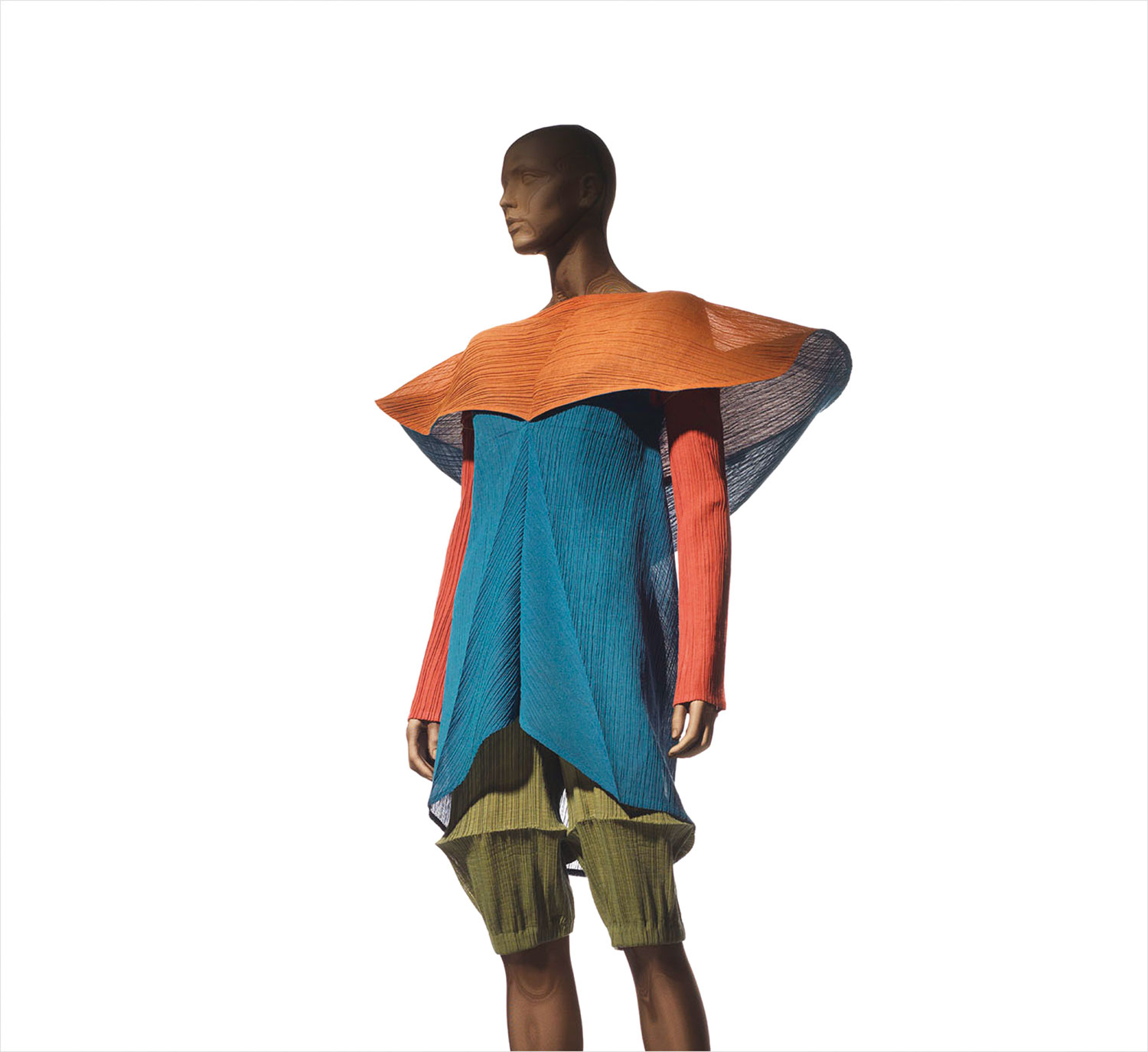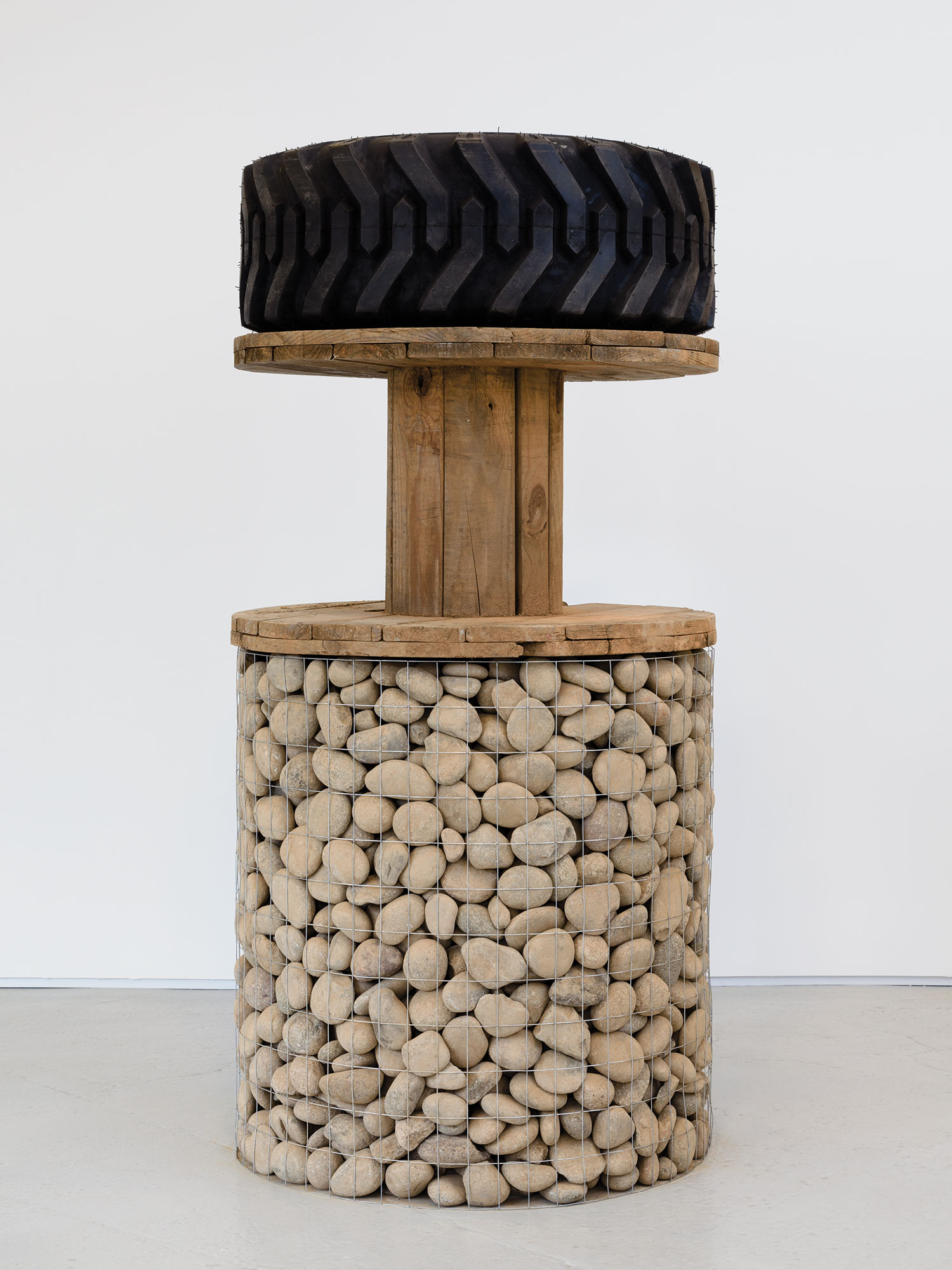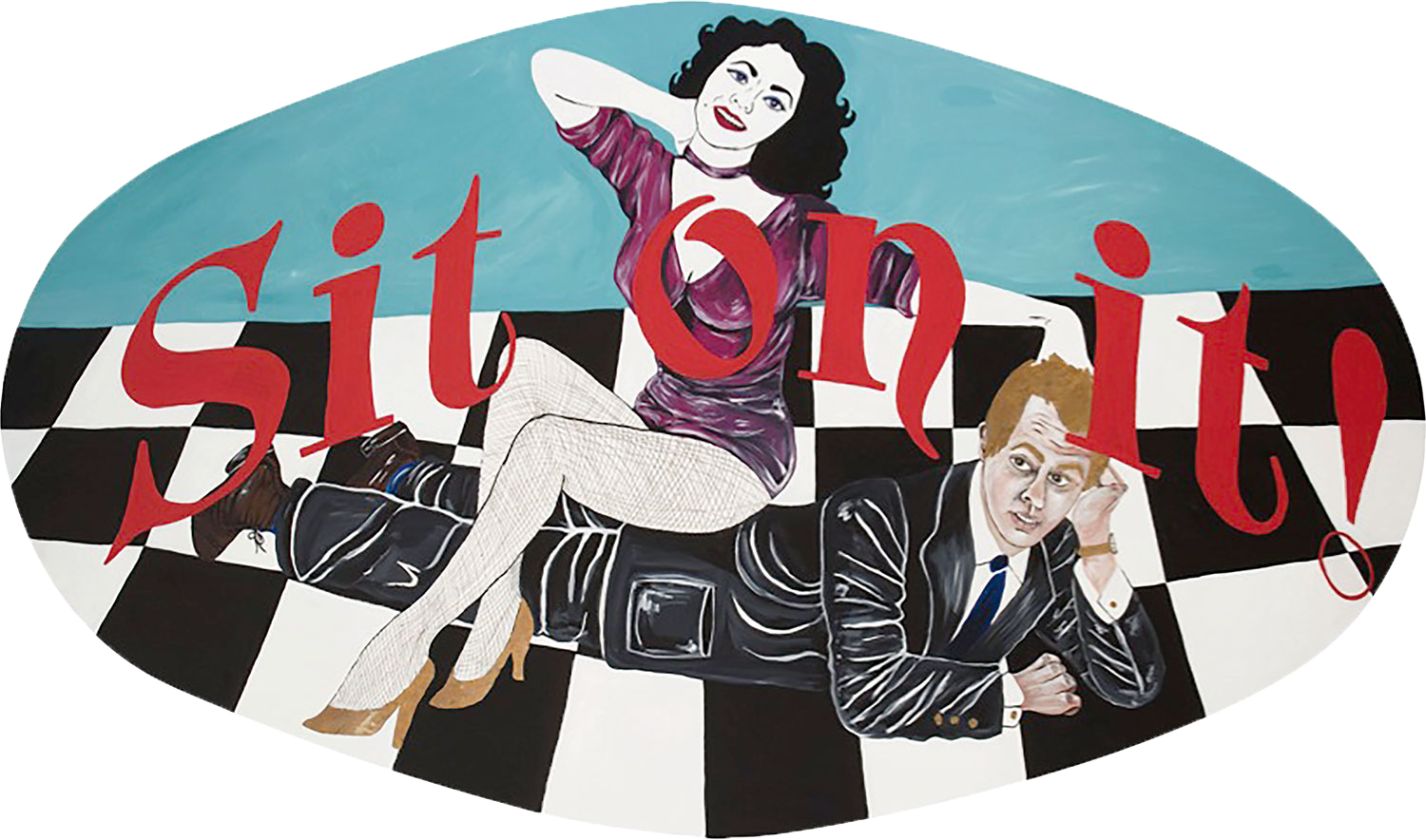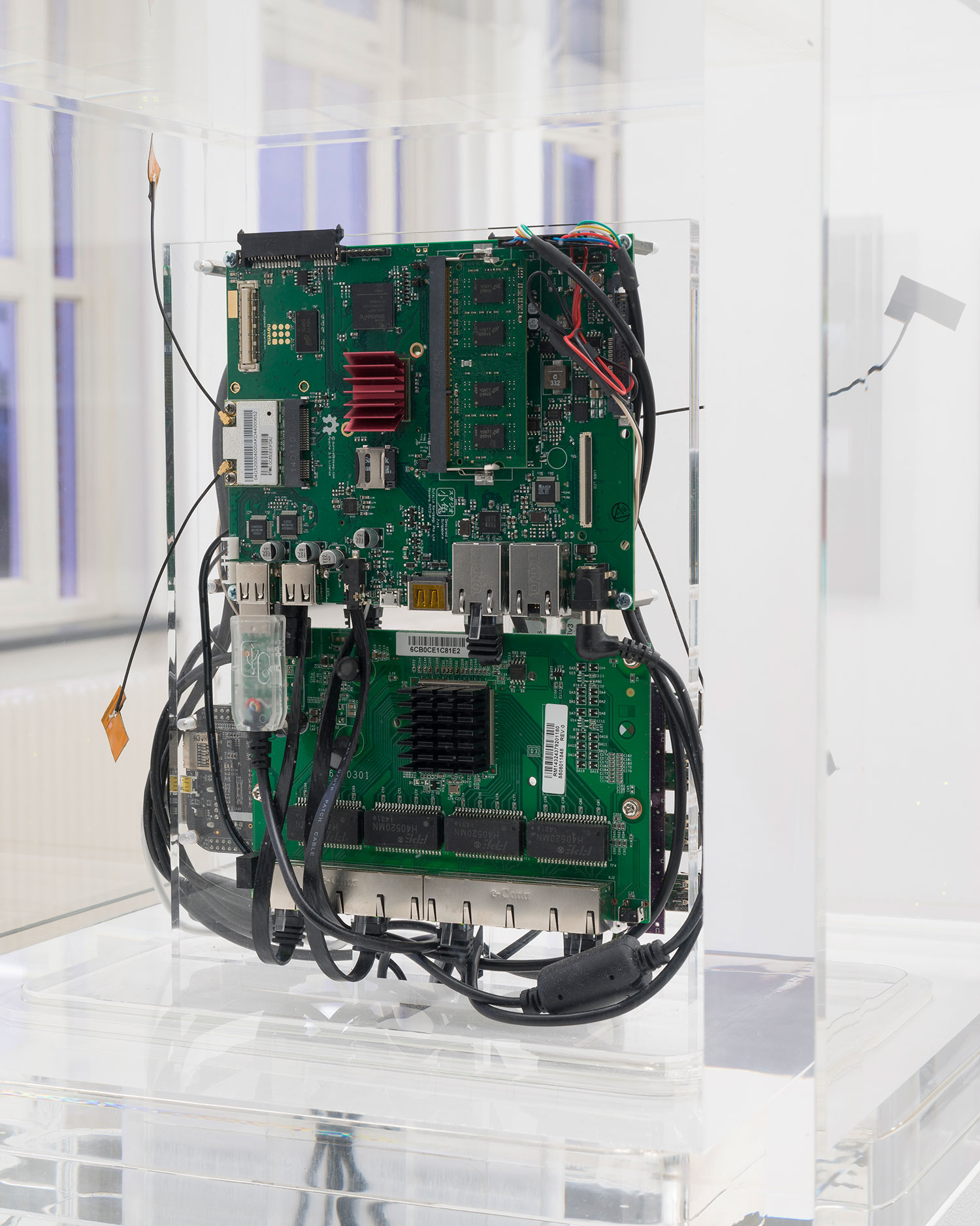
As I write this, Marina Pinsky (b. 1986, Russia; lives in Brussels) is working on a show for Kunsthalle Basel. To get my head around the project I asked her to send me some images, and she promptly zapped me a .zip’s worth. Clicking through an expanded folder of jpegs, I felt like a scientist examining a cache of mislabeled microscope slides. Within the sequence, images appeared to contaminate one another. The bacterial backdrop of a group of still lifes resurfaced as a transparent rectangle floating in front of several images of an industrial brick building which, considering how these things go, was as likely to contain the machines that extrude the thick foam blocks to which Pinsky’s photos are often adhered as it was the near empty rooms of a contemporary art institution into which the resultant sculptures are frequently installed. Further confusing matters was a series of works gamely depicting precisely this sort of institutional interior, not to mention some straight-laced exhibition documentation. Basically I found myself in a labyrinth, albeit one with a lot of natural light, and it made me smile to watch the large and numerous windows poke good-natured fun at their namesakes proliferating across on my desktop.
Put differently, Pinsky’s photographic corpus, through subtle manipulation, effects a leveling of real and pictorial space without recourse to the mise-en-abyme-like perspectival shenanigans of more traditional media. Rather than the frame within the frame ad infinitum, Pinsky’s images propose a more contingent operation, something akin to the frame within the frame leaning on its side next to the other frame that got scratched by the frame that was long ago misplaced by the insolvent framer whose frame shop was leased out from under him by his landlord.

So what am I talking about? Oh, right, much like inhabiting the shifting terrain of an increasingly speculative real estate market, it can feel difficult to find stable ground from which to assess Pinsky’s photographic output. Perhaps that explains why I am attracted now to her most literally grounded works to date, her ceramics.
Pharmakon I – XXIV (2015) depicts a batch of pastel-colored clay tablets. Like contemporary medications, these tablets are then encased in what look like standard foil and plastic blister packs. However, where one would expect to find the impossibly precise contours of a corporate brand, the clay surfaces of these pills bear a generic architectural landscape, depicted in subtle relief as though pressed with a seal. Considering this, we see it isn’t Advil or Tylenol but terra sigillata — Latin for “sealed earth” — that is the legitimate progenitor of these sculptures.
A moment of backstory: terra sigillata, a kind of ceramic proto-pill, was mined from mineral-rich clay deposits on the Mediterranean island Lemnos as early as 500 BC. Believed to have healing properties, it was formed into small, ingestible cakes that were authenticated with a distinctive seal before being distributed, traded and consumed across the European continent well into the middle of the nineteenth century. Terra sigillata were earth, literal territory, that was excavated, traded, eaten and defecated — and in this respect could be said to represent a pretty literal vector of de- and re-territorialization. To move thus, these earthen pellets, nearly coterminous with the trademarks they bore, became fungible and functional in equal measure. As such, they seemed to oscillate between medicinal clay, the valuable symbol of said clay, and the material substrate into which that symbolic value was impressed.
Therefore the terra sigillata looks very much like a discrete example of an even mutability between the real world and its symbolic counterpart, which will come unmoored with the arrival of aesthetics as an autonomous cultural practice. In fact, Rosalind Krauss uses the romantic conception of “picturesque” to index an early imbalance between the terms, one in which “nature itself is constituted in relation to its capability of being formed into pictures,” finally saying “it is perfectly obvious that through the action of the picturesque the very notion of landscape is constructed as a second term of which the first is a representation.” [“The Originality of the Avant-Garde,” in The Originality of the Avant-Garde and Other Modernist Myths, MIT Press, Cambridge, MA, 1985, p. 163]

Pinsky’s strangely self-referential landscapes, sculpted from land and representing the first land that in some sense became a symbolic representation of land, that is to say landscape, seem to produce an even more vertiginous effect vis-à-vis the gap between real and pictorial space than that of her photographs. To further articulate this effect we need to describe the specific iconography of these landscapes.
Toward accomplishing this task I’d hazard that lately times have been chill. They’ve been trending feudal, and trending warm, but they’ve been chill. Supply and demand are for the most part in accordance, that is, in a kind of whirling lockstep. Either a waltz or a web is being spun, and, excepting a few symbolic nods of disapproval, most don’t really care which. It seems like these days only mother earth, through a menopausal cocktail of hot flashes, cold fronts and thunderous outbursts, seems capable of giving real substantive form to her exasperation.
In Switzerland times are extra chill. Summer mornings on the Rhine, the Swiss literally float to work. Some are drifting through Basel, toward the headquarters of Novartis or Hoffmann-La Roche. Either way, the campuses of the world’s first and third largest pharmaceutical companies flicker on the riverbanks, aptly impersonating their own architectural renderings. Everywhere the virtual is stretching itself over the real like a second skin, and the Swiss, now dried off and dressed, mill about the new images largely to indicate their scale.
So these are the landscapes Pinsky presents to us in pale, unglazed ceramic. Pictures of buildings by Frank Gehry, Herzog & de Meuron and others, buildings that expertly facilitate the pharmaceutical conglomerate’s local shift away from industrial complexes to “places of innovation, knowledge and encounter.” [http://campus.novartis.com//#/tour/basel]

Simply put, we are looking at images of an advanced Western society’s buildings — buildings whose contents are characterized by an increasing proportion of “post-industrial” work. Vilém Flusser describes this scenario as one in which the worker, himself having supplanted the farmer of an agrarian past, is ultimately replaced by the functionary. This new figure is not evaluated by the quality of a specific product of his or her labor, or by the marketable capacity for productive labor as such, but simply by his or her facility with a vast array of already extant symbols. Though the functionary necessarily invents nothing, their ability to recombine symbols with more or less ingenuity vis-à-vis the changing demands of the dominant order provides for them their rights — rights that represent the very total limits of their being within that order. As such, it is understandable that the functionary becomes a kind of head-over-heels formalist, one for whom symbols are more than “phenomena that have been conventionalized to have meaning” outside the given order and are instead “reality proper.” [Flusser, Post-History, Univocal, Minneapolis, 2013, p. 31]
So that’s what’s inside the buildings, more or less. But what about their curving exteriors? Well, in explicitly architectural terms, Baudrillard articulates a further symbolic development. By borrowing Flusser’s definition of the photographic image as simply the “deployment of the technical virtualities of the camera” and transposing it into the realm of design, he arrives at an understanding of an architectural functionary whose praxis is predicated on nothing more than a “technical availability of forms.” His example par excellence of this new architecture as output is Gehry’s Guggenheim Museum Bilbao. To Baudrillard, this museum is a literal prototype, that is, “a building created … from combinatory elements or modules, such that a thousand similar [buildings] can be constructed by simply changing the software.” Consequently the deployment of the program invariably leads to a “proliferation of architectural clones around the globe” — a virtual reality of architecture that, in its increasingly frequent collaboration with the ballooning culture industry, ultimately leads to a kind of “virtual aestheticization of all society.” [Architecture: Truth or Radicalism?, Semiotext(e), New York, 2014, pp. 16–18]

A brief detour through a small thicket of anecdotal evidence: A year or so ago in Paris I saw a goat in the zoo at the Jardin d’Acclimatation. It was standing on an artificial rock outcropping and munching on some grass. In the background, the Gehry-designed Fondation Louis Vuitton rose from the earth like something that recently fell from the sky. My soon-to-be wife and I had been traipsing around in there moments before, looking at an exquisite exhibition of modernist masterpieces when gradually we started to feel like readymades ourselves. When we stepped outside I was distressed by the quotation marks I saw fluttering around us, and it was with envious wonder that I observed the aforementioned goat’s cool indifference toward his own. With an unconscious flick of his little tail or a twitch of his broad, flat ears he continued to brush off and succumb to the incursions of the picturesque all without missing a bite.
This uneven process, this wobbly inversion of the vector of signification described above, seemed not to bother the goat at all. Why did the latent aesthetic DNA — which after detection in the picturesque, metastasized to doom from the outset all the utopic programs of the subsequent avant-gardes — not bug him? I don’t know. From my vantage point, looking at him looking at the private museum, any “successful” system of aesthetic formulations meant to bring into reality analogous social formations invariably ended instead by bringing reality itself further into the abstract realm of aesthetic forms. What a bitter pill to swallow!

However, it is precisely this long-calcified theoretical mise-en-scène that Pinsky distills and administers. Part remedy and part poison, she “introduces it into the body of the discourse with all its ambivalence.” Like the texts that Phaedrus brings on his walk with Socrates and that Socrates in turn compares to a drug, a pharmakon in the ancient Greek, we are faced with a beautiful sculpture, a substance “operating through seduction… making us stray from our general, natural, habitual paths.” [Jacques Derrida, Dissemination, University of Chicago Press, Chicago, 1981, p. 70.] I think this would explain why a few paragraphs ago I found myself wandering off in search of a goat, or why in writing this final sentence I feel I’m only just beginning to get somewhere.





